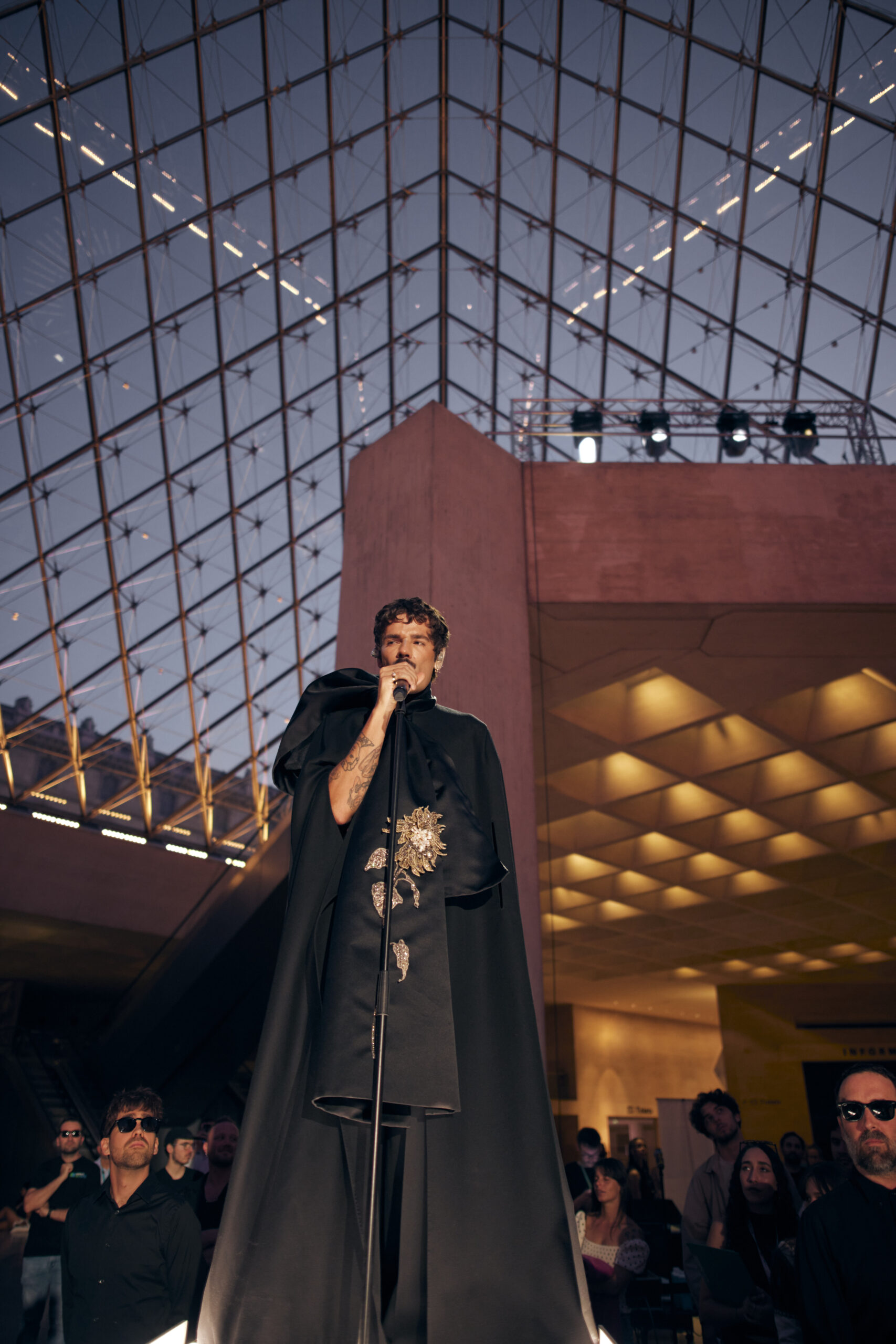As the Parisian night settled over the glass pyramid of the Louvre, La Nuit de la Mode drew to an unforgettable close. The exhibition ended with a performance by French artist Lucky Love, who appeared in a custom Givenchy by Sarah Burton, who designed the look with both the occasion and Lucky Love in mind.
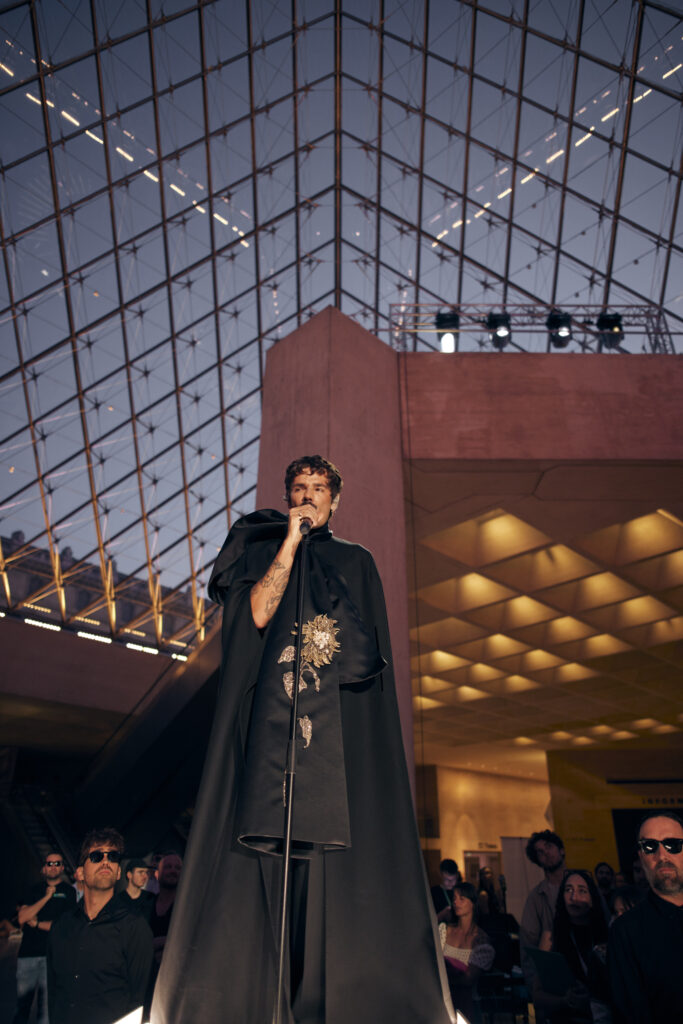

Courtesy of Givenchy – CREDIT Francisco Gomez De Villaboa and Jean Picon
Performing beneath the gilded ceilings of the Musée du Louvre, Lucky Love wore Burton’s creation, a sculptural black wool gabardine cape, paired with pleated trousers cut to move with the flow of the performance. It was safe to say, the garment and Love were the perfect pair. The former rested beautifully, both Love’s and the garment’s silhouettes became one. Anchoring the look was a bold black silk satin duchesse bow, embroidered with a single sunflower. This romantic and slightly unexpected detail managed to capture the surrealism of the evening.
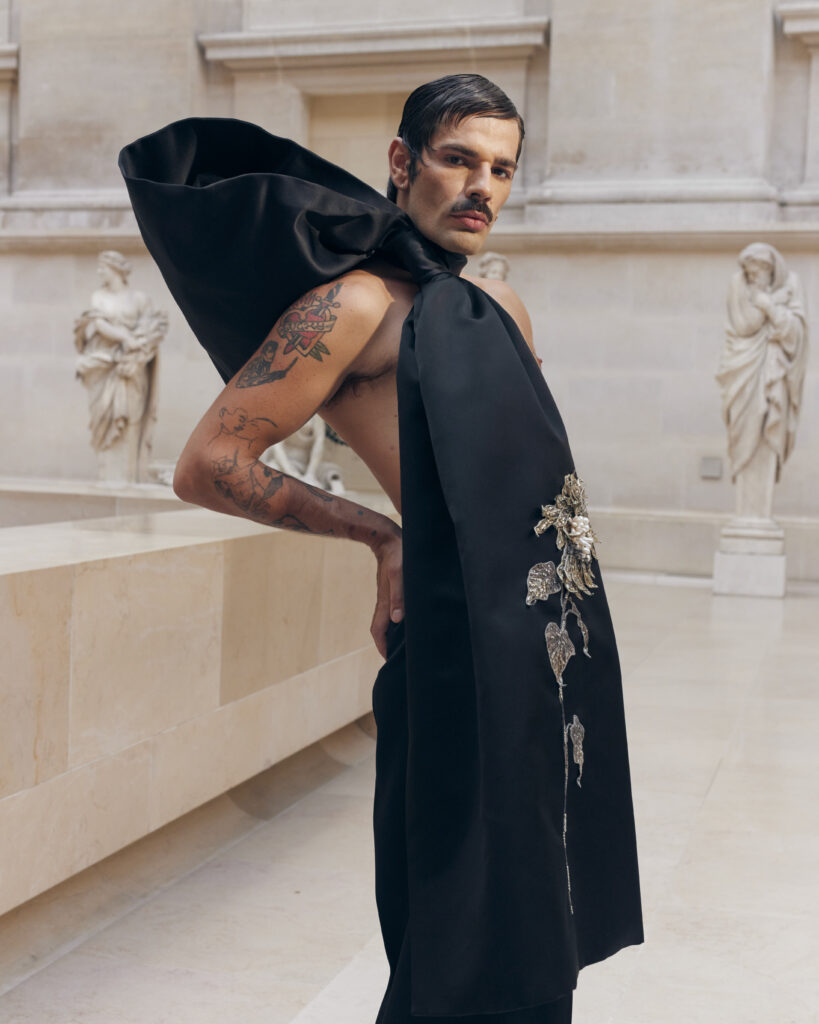
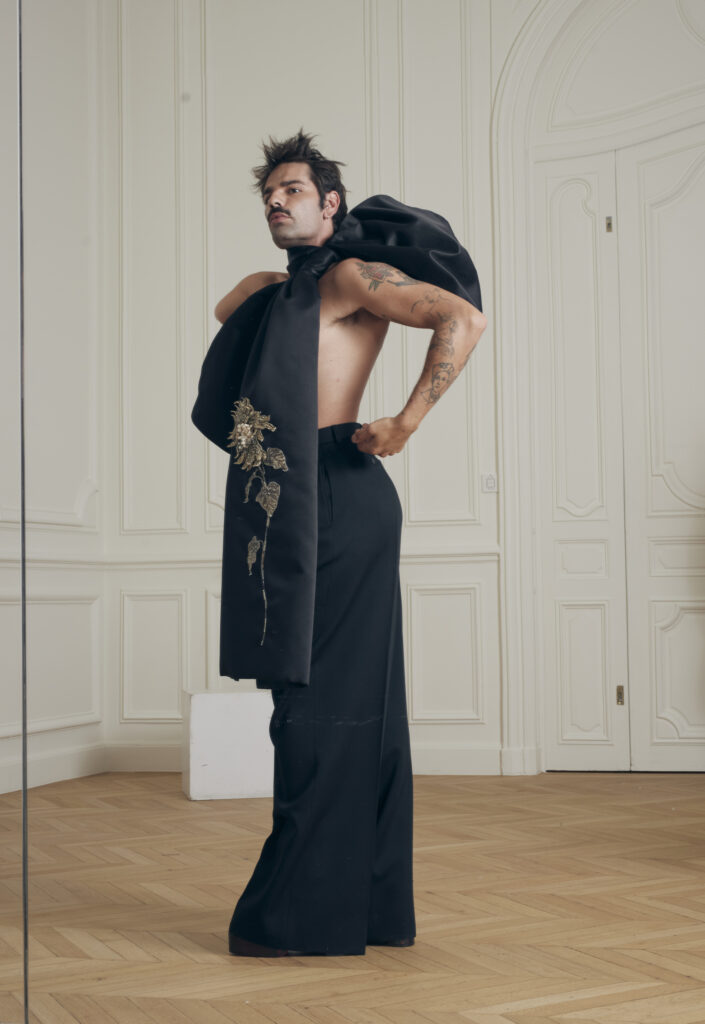
Courtesy of Givenchy – CREDIT Francisco Gomez De Villaboa
The custom creation marks a significant moment: it’s one of the first public-facing looks by Sarah Burton for Givenchy, following her storied tenure at Alexander McQueen. The design draws on Burton’s signature drama, billowing silhouettes, symbols, and a reverence for acute design intelligence, while reinterpreting the Givenchy man through a lens of lyrical performance.
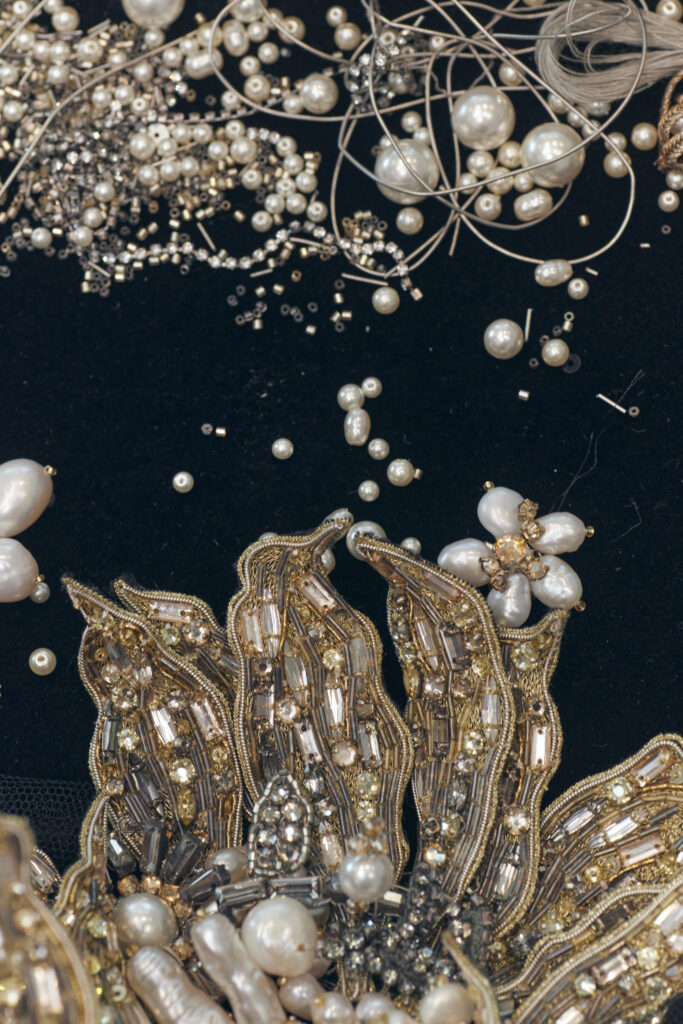
Courtesy of Givenchy – CREDIT FRANCISCO GOMEZ DE VILABOA
The centerpiece of the look: a black silk satin duchesse bow, dramatically oversized and embroidered with a single, luminous sunflower. The embellishment, handcrafted using layered pearls, metallic threadwork, and couture embroidery techniques, embodied a romantic tension. A quiet nod to the natural world, it added a surreal softness to the otherwise monastic structure of the look.

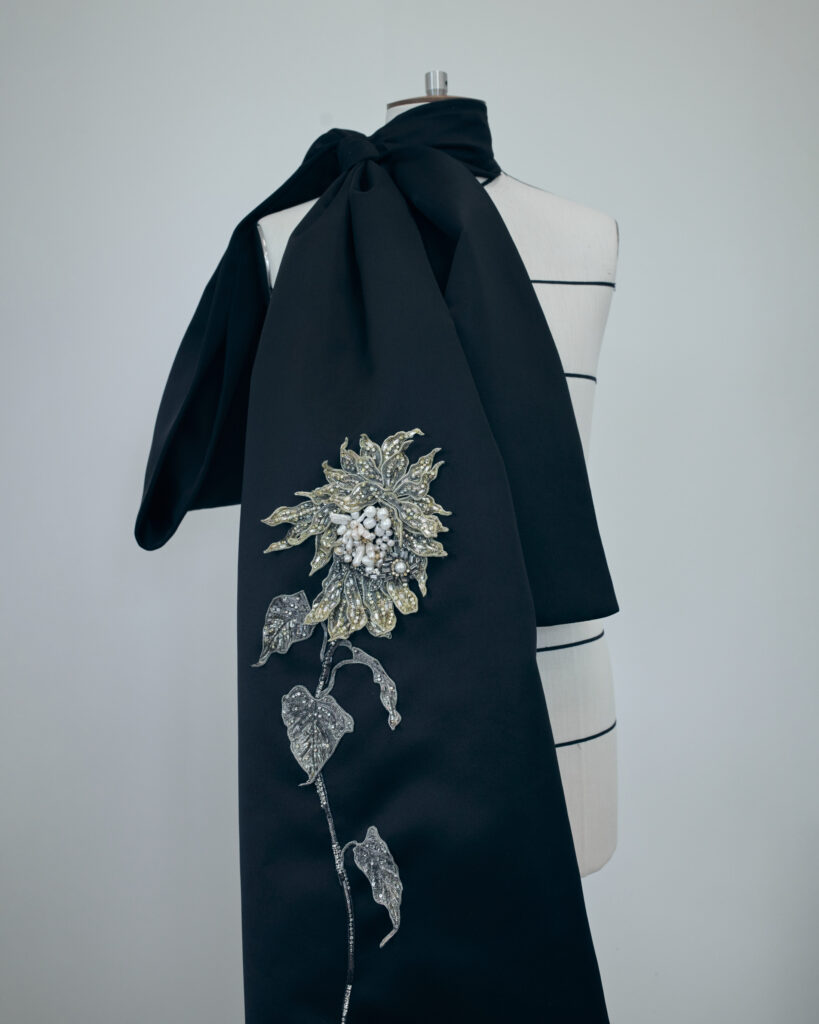

Courtesy of Givenchy – CREDIT FRANCISCO GOMEZ DE VILABOA
Lucky Love’s music has always blurred boundaries, and this moment at the Louvre was no different. Surrounded by centuries of art, under the watchful eye of fashion’s finest, he turned the museum into a stage and fashion into a form of storytelling.
Discover More









